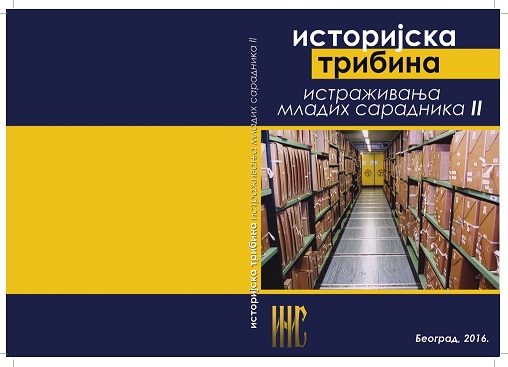Завод за принудно васпитање омладине у Смедеревској Паланци: старе контроверзе и нова тумачења
The Institute for Compulsory Education in Smederevska Palanka: Old Controversies and New Views
Author(s): Aleksandar Stojanović
Subject(s): Education, History of ideas, Local History / Microhistory, Political psychology, History of Education, State/Government and Education, History of Communism
Published by: Institut za noviju istoriju Srbije
Keywords: Institute for Compulsory Education of the Youth; Smederevska Palanka; Zbor movement; Historiography; Milutin Popović; Dragojla Popović-Ostojić;
Summary/Abstract: Functioning of the Institute for Compulsory Education in Smederevska Palanka has been a source of controversies in Yugoslav and Serbian historiographies for decades. Most frequently, it was analyzed through the ideological prism. For some it was a concentration camp and a torture chamber, for others a „peace oasis“ and a „college for communists“. Not only ideological, but also utilitarian motives of witnesses and authors who have been writing about the Institute, contributed to tendentious interpretations. This institution, probably best described as „reformatory“ by the British Foreign Office, was integral part of the concept of education in „national spirit“ that was implemented by the collaborationist Ministry of Education. The leader of the Zbor movement, Dimitrije Ljotić, significantly contributed to its founding. During the two years of the Institute's operation, some 1,200 young communists passed through it. Their stay in the Institute was marked by hard material and life conditions, but they enjoyed regular general and professional instruction, and could take part in a number of free-time activities of entertaining, artistic and sporting character. The idea of stay of young communists in the Institute was not psycho-physical torture, but rather their ideological „conversion“ in harmony with national-conservative ideas the Nedić regime cherished of the „de-nationalized“ and „misled“ youth and intelligentsia. Apart from the regular political instruction, special lectures were held by members of the Zbor, by collaborationist dignitaries, but also by a number of a-political experts from various fields. After the failed rebellion at the Institute in mid-April 1943 security and disciplinary measures were tightened and the culprits were turned over to the Special Police and shot after investigation at the shooting-range in Jajinci. During the two years of the Institute's functioning a large number of inmates was set free as „successfully re-educated“, and several dozens of cases of former inmates asking the Ministry of Education to be readmitted to the Institute were recorded. The institution's functioning was ended amid the action for liberation of Serbia. The Institute was officially disbanded in September 1944 and its Head Master joined the chetniks of Draža Mihailović with whom he found his death. Among the more prominent inmates were the famous movie director Mladomir Puriša Đorđević, writers and journalists Milutin Doroslovac (Milo Dor), Slobodan Marković (Libero Markoni) and Branko V. Radičević, as well as the judge of the Supreme Court of the Socialist Federal Republic of Yugoslavia Tiosav Velimirović.
Book: Историјска трибина. Истраживања младих сарадника Института за новију историју Србије (II)
- Page Range: 39-69
- Page Count: 31
- Publication Year: 2016
- Language: Serbian
- Content File-PDF

